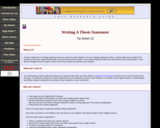
An excellent tip sheet for creating and perfecting a thesis statement. Also includes information about statement of purpose and examples.
- Subject:
- Arts
- English Language Arts
- Material Type:
- Reading
- Date Added:
- 12/01/2023

An excellent tip sheet for creating and perfecting a thesis statement. Also includes information about statement of purpose and examples.

Interesting article from Canadaone.com that outlines the author's seven C's of effective writing. Each of the concepts (all beginning with the letter "C") includes an explanation that demonstrates why the concept is important to the student.

Use the links on the right to get a better understanding of purpose in writing including the types of purposes and how audience affects purpose. Click on Purpose and Audience and Purpose and Strategies. W.9-10.4 Write/Audience/Purpose; CCSS.ELA-Literacy.WHST.6-8.5 Develop and strengthen writing

A screencast lesson explaining common errors when writing an introduction and how to avoid them. [8:19]

Extensive explanation of thesis development.
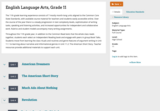
The 11th grade learning experience consists of 7 mostly month-long units aligned to the Common Core State Standards, with available course material for teachers and students easily accessible online. Over the course of the year there is a steady progression in text complexity levels, sophistication of writing tasks, speaking and listening activities, and increased opportunities for independent and collaborative work. Rubrics and student models accompany many writing assignments.Throughout the 11th grade year, in addition to the Common Read texts that the whole class reads together, students each select an Independent Reading book and engage with peers in group Book Talks. Students move from learning the class rituals and routines and genre features of argument writing in Unit 11.1 to learning about narrative and informational genres in Unit 11.2: The American Short Story. Teacher resources provide additional materials to support each unit.

In this unit, students will explore great works of American literature and consider how writers reflect the time period in which they write. They will write two literary analysis papers and also work in groups to research and develop anthologies of excellent American stories.
ACCOMPLISHMENTS
Students read and analyze stories from several 19th-, 20th-, and 21st-century American authors. After researching a time period, they select stories from that period to create an anthology. The readings enhance their understanding of the short story, increase their exposure to well-known American authors, and allow them to examine the influence of social, cultural, and political context.
Students examine elements of short stories and have an opportunity for close reading of several American short stories. During these close readings, they examine the ways that short story writers attempt to explore the greater truths of the American experience through their literature.
GUIDING QUESTIONS
These questions are a guide to stimulate thinking, discussion, and writing on the themes and ideas in the unit. For complete and thoughtful answers and for meaningful discussions, students must use evidence based on careful reading of the texts.
If you were to write a short story about this decade, what issues might you focus on?
What defines a short story? Just length?
To what extent do these stories reflect the era or decade in which they were written?
To what extent are the themes they address universal?
CLASSROOM FILMS
History.com has short videos on the Vietnam War (“Vietnam” and “A Soldier's Story”).
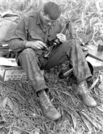
In the final lesson in this episode, and as a warm-up for the final essay and project, students will discuss the organization of the student sample essay “The Search for Knowledge.”
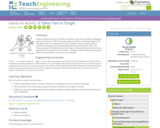
Students explore the theme of conflict in literature. They learn the difference between internal and external conflict and various types of conflicts, including self against self, self against other, and self against nature or machine. Stories are used to discuss methods of managing and resolving conflict and interpersonal friction. Note: The literacy activities for the Mechanics unit are based on physical themes that have broad application to our experience in the world â concepts of rhythm, balance, spin, gravity, levity, inertia, momentum, friction, stress and tension.

A tip sheet on how to create and outline for a research paper.

This site gives advice on how to write an effective purpose (thesis) statement. The summary is given as answers to four questions: what? why? when? how?.

Written by a college professor, this site discusses five areas for students to work on to improve their writing. The areas are Thesis, Research, Close Reading, Style, and Mechanics. The author is clear and concise in his advice, and often uses humor to make his points. Well-done and thorough.
![San Jose State: Writing A Winning Statement of Purpose [PDF]](https://openspace.infohio.org/static/newdesign/images/materials/default-thumbnail-index.png)
How do you write a winning statement of purpose? This is a clear and comprehensive explanation of how to approach and write an essay from the San Jose State University. Practice exercises are given at the end.

What are purposes in writing? Use this site from the University of Missouri-Rolla to learn more about the parts of the communication model. W.9-10.10 Write Routinely
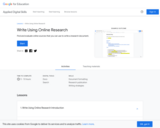
Find and evaluate online sources that you can use to write a research document. Time to complete: 5-10 hours

A screencast lesson discussing and providing examples of three elements required for a strong introduction: an effective hook, a strong thesis, and appropriate background information. [5:39] CCSS.ELA-Literacy.WHST.6-8.2